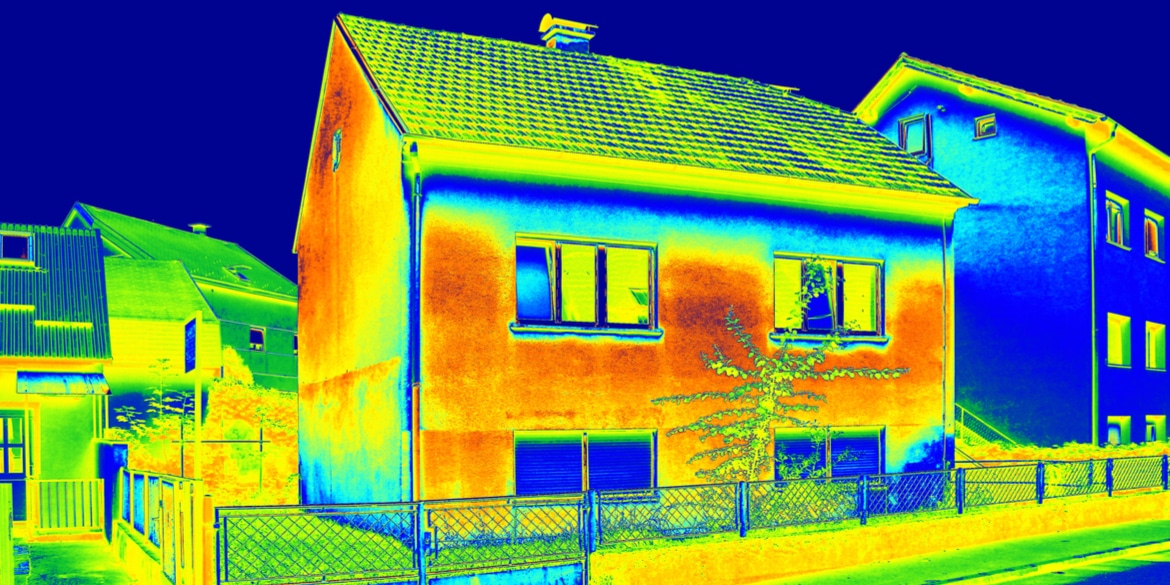Thermal images identify areas of heat loss in a building and allow the temperature of the surfaces shown to be measured. This enables our surveyors to assess the significance of any heat loss or structural problems that exist and offer reliably informed recommendations to rectify them within their building survey and inspection reports.
In April 2018 the energy efficiency standards for commercial and residential properties will be changing. After this time, all properties required to have an Energy performance certificate EPC) will need a grading of E or above.
One way to improve energy efficiency in a building is to reduce heat loss. Our Chartered Building Surveyors utilise thermal images on their building surveys if they believe it will provide additional benefit to the inspection or you can request them at the point of instruction. The images taken can highlight defects that are otherwise hidden to the naked eye and can be used to identify areas of high heat loss.
Thermal imaging cameras can;
- Locate heating and hot water pipework under flooring and in concealed areas useful if undertaking alteration works and identifying leaks
- Check the coverage and output performance of concealed underfloor heating
- Detect construction issues such as roof leaks and areas of water ingress where the source of dampness cannot be easily identified externally through more traditional methods.
- Help to identify the cause of condensation, to enable prevention methods to be effectively specified.
- Identify the effectiveness of photo voltaic solar panels and outline any defects.
By establishing areas where improvements to thermal insulation and improved glazing would improve the energy efficiency of a building can save the owner money in the long run and move the property up in its EPC grading.
Need advice or services?
If you would like to find out more about energy efficiency or you require a building survey then please contact a member of our Building Surveying team using our contact form.
Want to hear more?
If you found this article helpful and would like to receive more posts like this directly to your inbox, subscribe to receive our quarterly newsletter or follow us on twitter @KemptonCarr and like us on facebook to see them first.
